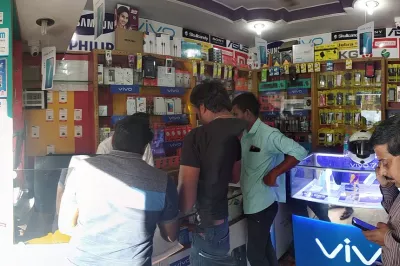Kenya Ends Hidden Costs for Digital Financial Services
The Competition Authority of Kenya (CAK) on October 29 announced an important new standard for pricing in digital financial services. All financial services providers that offer services via digital channels must now present consumers full information on the costs before they use the service on the same screen on which the consumer is transacting.
As CGAP has noted before, in Kenya many digital financial service (DFS) providers do not disclose to consumers the costs of products such as person-to-person payments, bill payments, merchant payments, and loans. This has resulted in poor consumer understanding of costs in many cases – 40% of CGAP survey respondents who used paybill services on M-Pesa, for example, reported thinking this service was free, when in fact most paybill transactions carry hidden fees.

This action by CAK is noteworthy for several reasons:
- The insistence on disclosing costs on the transaction channel reflects the way many consumers process pricing information – in a “just in time” manner when they are at the point of making a transaction versus traditional approaches such as posting of tariff fees at agent locations.
- The enforcement will apply to all types of providers. It is not just regulated banks that will have to bear the burden of compliance while the growing number of unregulated providers are not held to the same standards of consumer protection and compliance.
- The ruling would apply to a wide range of product types. This should set a standard for better transparency as new products leverage digital channels, such as the long-awaited M-Akiba government securities product. The more complex the products offered through these digital channels, the more crucial it is to have simple, standardized product information easily available and understandable to consumers.
The action also raises some interesting questions and further consumer protection opportunities that will be worth monitoring:
- If this action is implemented in full, it would mean that dozens of providers will be developing new disclosure approaches. This could be an opportunity to review the various approaches to compliance, and perhaps agree on a uniform standard, format, or even wording for each product type across DFS providers. CGAP has recently identified some promising good practices for transparency and clarity of production information on smartphones, and the case of Kenya could advance insights on this topic.
- How will this affect consumer understanding of prices and consumer behavior? As noted above, CGAP research has indicated limited price awareness for some DFS. This ruling creates a “natural experiment” in the marketplace which could shed light on how consumers, as they become more price aware through better disclosure, retain and act upon comparative information across providers. This could include looking at borrowing behavior, use of competing payments providers, as well as paybill and merchant payment services.
- Will authorities in other DFS markets follow CAK’s lead? Several other DFS markets, like Kenya’s, have poor and inconsistently applied pricing transparency. Even where transparency is addressed in e-money regulations, such as Ghana and Tanzania, the language can be high level and open to interpretation, and not always fully enforced. Just as many markets learned from Kenya’s initial experiences in mobile money, and later digital credit, perhaps they will follow Kenya’s lead in bringing consumer protection standards in DFS up to speed with these fast-growing and diversifying financial services and provider types.




Add new comment